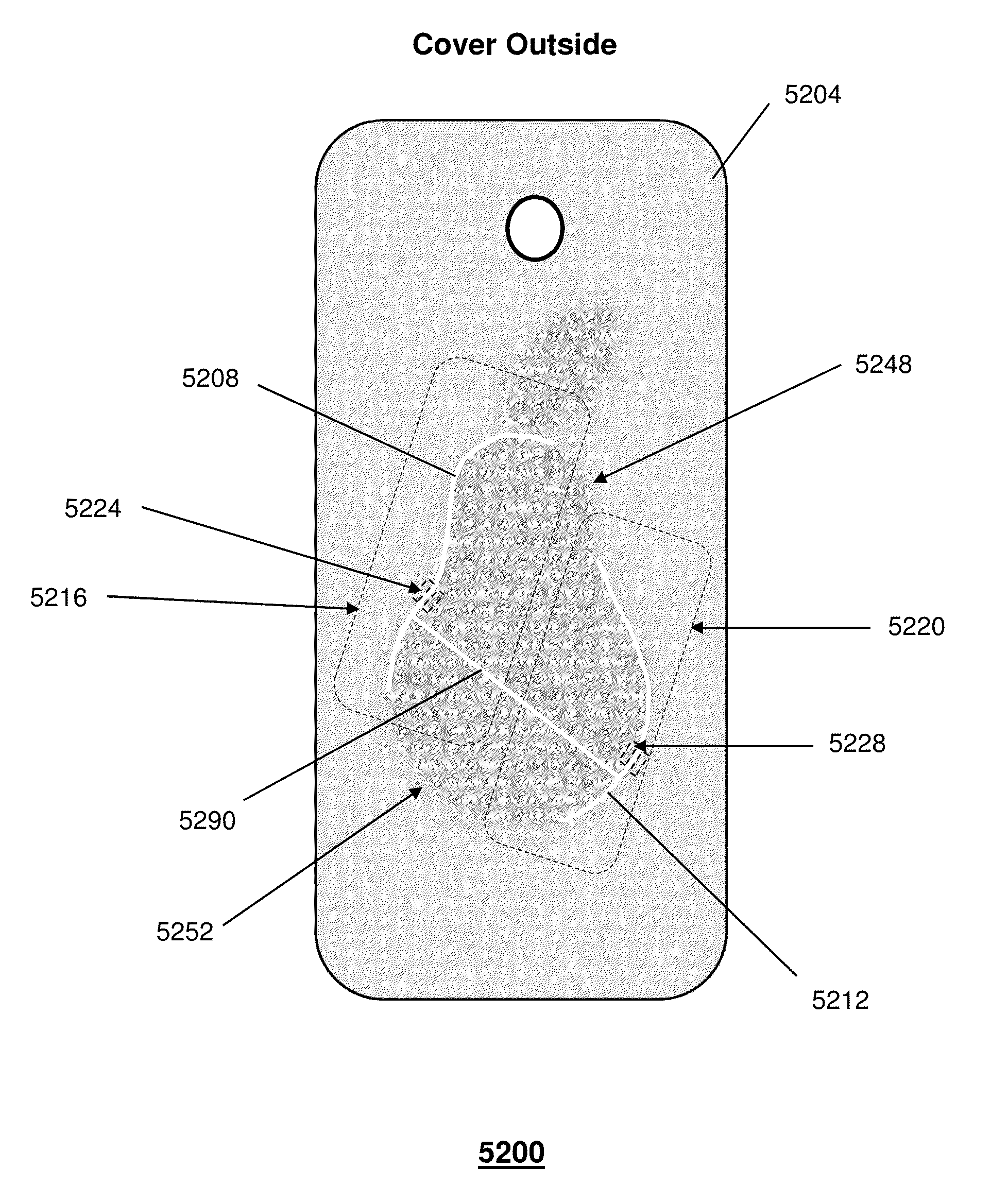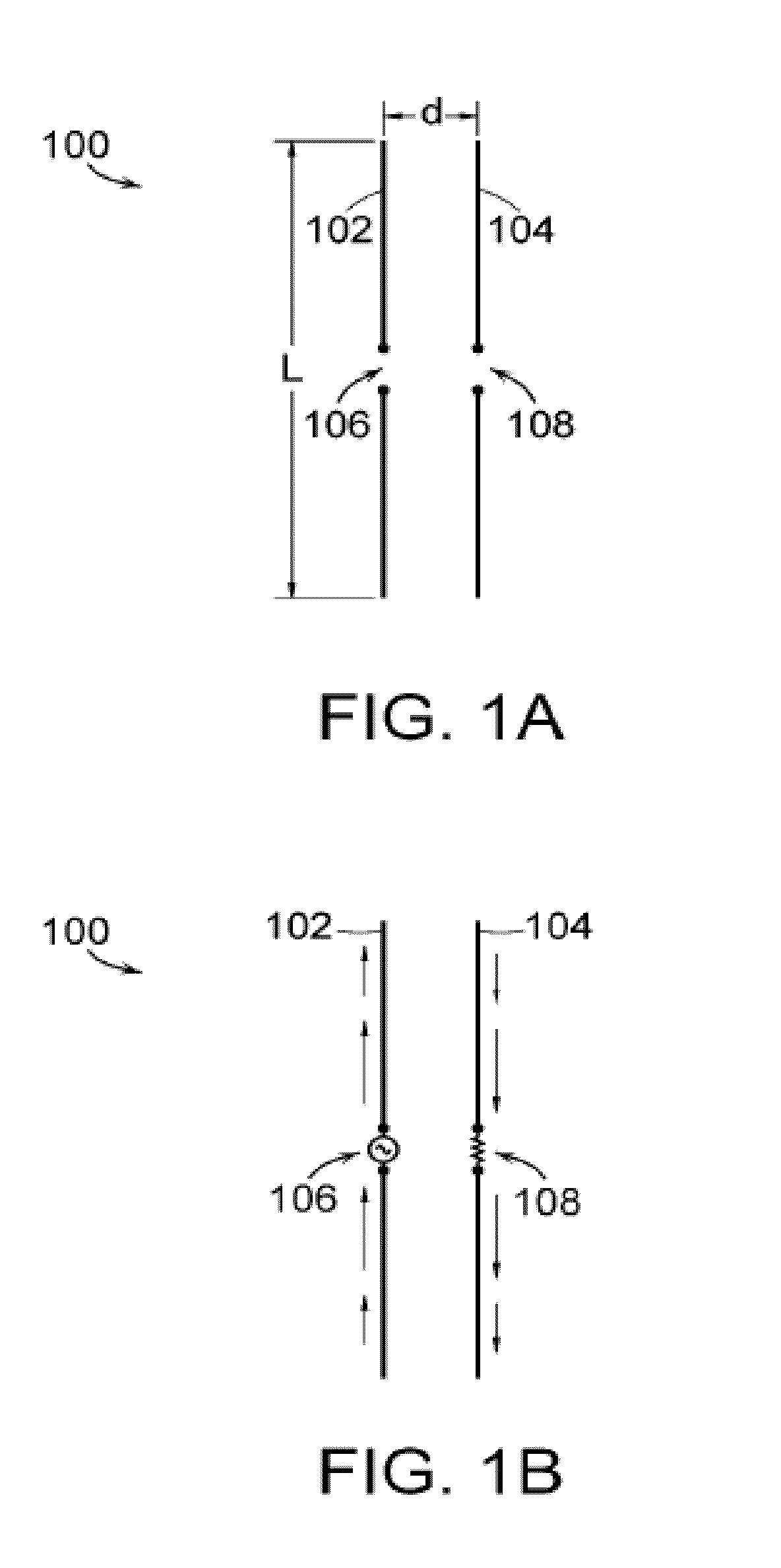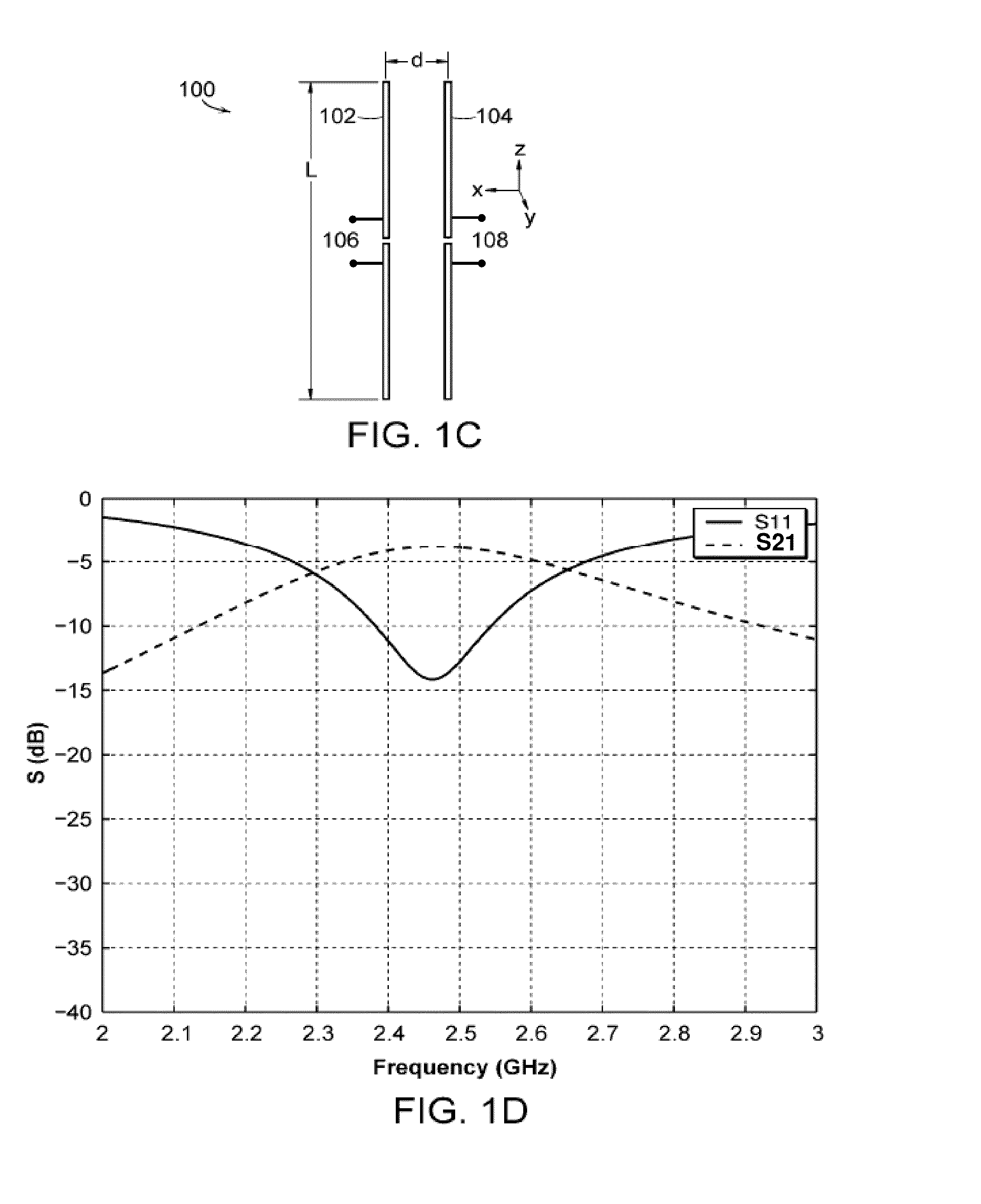Antenna structures and methods
a technology of antenna structure and antenna, applied in the direction of electrically short antenna, position fixation, discontnuous tuning with seperate pre-tuned circuits, etc., can solve the problems of affecting the transmission performance of antennas
- Summary
- Abstract
- Description
- Claims
- Application Information
AI Technical Summary
Benefits of technology
Problems solved by technology
Method used
Image
Examples
Embodiment Construction
[0091]The subject disclosure describes, among other things, illustrative embodiments for slot antenna structures in a conductive cover of an electronic device, where the antenna structures define a trade dress design in the conductive cover. Other embodiments are described in the subject disclosure.
[0092]One embodiment of the subject disclosure includes an antenna structure comprising a conductive cover of an electronic device, a first antenna element, a second antenna element, and a trade dress design in the conductive cover. The first antenna element can convert between first electromagnetic signals and first electrical signals. The first antenna element can comprise a first portion of the conductive cover having a first opening formed therein. The first antenna element can be communicatively coupled to first antenna ports. The second antenna element can convert between second electromagnetic signals and second electrical signals. The second antenna element can comprise a second p...
PUM
 Login to View More
Login to View More Abstract
Description
Claims
Application Information
 Login to View More
Login to View More - R&D
- Intellectual Property
- Life Sciences
- Materials
- Tech Scout
- Unparalleled Data Quality
- Higher Quality Content
- 60% Fewer Hallucinations
Browse by: Latest US Patents, China's latest patents, Technical Efficacy Thesaurus, Application Domain, Technology Topic, Popular Technical Reports.
© 2025 PatSnap. All rights reserved.Legal|Privacy policy|Modern Slavery Act Transparency Statement|Sitemap|About US| Contact US: help@patsnap.com



